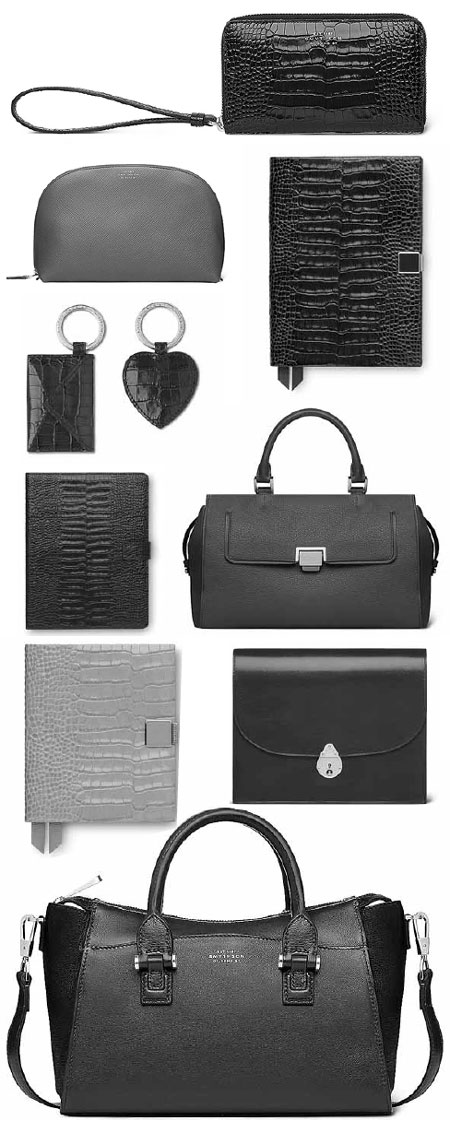Timeless luxury
|
Smythson products are about craftsmanship, materials and aesthetic design with British elements. |
Brand history
Frank Smythson opened his first shop on Sept 29, 1887 at 133 New Bond Street where he traded in 'first-class stationery, leather goods and cabinet work". Much of this business and its standards exist in today's luxury retail empire. In some cases, the products have come full circle this year, as the company celebrates its 125th anniversary.
In the 1900s, Smythson produced mostly structured leather bags such as the Monitor bag promoted "for the carriage or for traveling - the most convenient of bags.
There was also a leather document case described as "a very convenient and portable arrangement." But it is the Bond Street bag (rather its striped lining) which would "always hold just a little more" that has found a second life over a hundred years later.
Various shades of beige with a shot of iconic Nile blue make up the combination for the aptly named "Smythson" stripe. Today this signature cotton fabric is used to line the brand's newest contemporary handbags from the Eliot collection.
In 1908, Smythson created a travel letter case in purple baby buffalo. For its Hong Kong store opening, there will be a limited edition of 18 clutches: 10 re-issued in the original form and eight in Red python, available only in Hong Kong, to celebrate the Year of the Snake. The clutch pays tribute to the auspicious number 8 in Chinese culture.
"This would have been used as a correspondence case to carry unanswered letters on a train or when traveling," explains Janowski with excitement about another piece that contributes to modernizing Smythson's heritage, "Today, this beautiful clutch can be used day and night and also as an iPad case. It's the perfect combination of old and new."
Also in 1908, Smythson created not just the first leather bound diary using thin, airmail-weight (later christened "featherweight") paper but the first supple, lightweight and durable leather diary.
Previous notebooks were durable but were hard-bound and heavy. This innovative design meant that the books would be light with covers that showed little signs of wear. The "featherweight diary" was an instant success and catapulted Smythson to the forefront of diary production.
It was renamed the Panama diary in 2005 and remains one of the brand's most iconic products. It is called Panama after the hat as it exhibits the same qualities - lightness, durability, flexibility, practicality and enduring style. Lines outside the shop during the World War II showed that not even paper-rationing dampened its popularity.
The brand's heritage is steeped not just in "first-class stationery" but in the most elaborate personalized writing paper one could imagine.
This sealed its reputation as the foremost purveyors of luxury paper, a legacy that still lives on today.
The heyday was in the 1920s and 1930s when Indian and European royalty ordered bespoke hand-bordered paper engraved with personal monograms in gold, silver and rich colors with mother of pearl inlays.
As travel became popular and the jet-set began to frequent London, more international aristocrats and Hollywood stars led to four royal warrants, and as they say, the rest is (glamorous) history.























